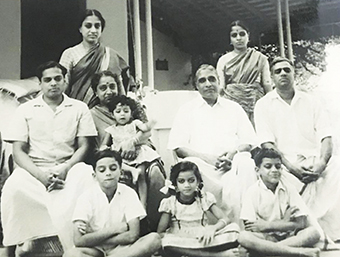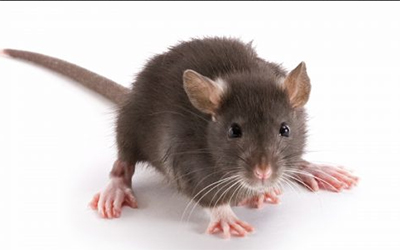The Kongu country in the Coimbatore region is known for its hardy and creative people. Lack of sufficient rainfall and the nature of the soil have made people seek fresh methods. The forest soil, red soil and black cotton soil offer enormous diversity. Migratory birds, the sweet waters of the Noyyal were home to a River Noyyal Civilization. Perur is a village on the banks of River Noyyal and its Padithurai is really famous. The temples, choultries and mutts at Perur make it unique. Kachiappa Munivar wrote the Perur Puranam from Perur during the seventeenth century. He compares the river to a chaste woman. If we look at the copper plates connected to the Ganga ruler Konkanivarman, it is obvious that his mentor the Jain Sage Simhanandi was from Perur.
Perur has been an important location for the past several thousand years. A number of excavations have yielded good results. The markings found on pottery are quite unique. Perhaps these markings were used by one type of people. There are only four places in Tamilnadu with images connected with Lakulesa, the founder of Lakulesapasupatham in Tamilnadu and Perur is among them. The others being Mamallapuram, Devarmalai in Pudukottai and a place near Madurai.
A Perumal temple had been constructed those days and we can learn about it from the inscriptions connected with Parantaka Nedunchezian (Pandya). The Ezhupidariamman temple in the neighbourhood has lovely icons of the Saptamatrukas. The Shiva and Nagaraja (eighth century) are found within the same campus. We can find a lot of burnt clay items in Perur. A brick structure belonging to the eighth century was also discovered. The Perur Patteeswarar Temple is over 1000 years old. It was reconstructed about 800 years ago. There are about 50 inscriptions on stone here and they belong to Veera Kerala, Chera, Kongu Chola, Pandya, Hoysala periods. The inscriptions talk about the donations, endowments, administration of the temple, check dams, rights of communities and also details of the bronze icons presented to the temple. Saint Appar has made a mention of Perur and so has Sekkilar. Sundaramurthy Nayanmar has been to this historic place. Nataraja has danced here for Nandi, Sundarar, Ugrakali and Thirumal (as in Chidambaram). Perur is known as Dakshina Kailasam and Melai Chidambaram. There are four Chidambarams – Adi Chidambaram (Thiru Uttirakosa Mangai), Chidambaram itself, Chinna Chidambaram (Thiruvanjaikulam) and Perur. On learning about this, Sage Narada installed a Shivalingam and created a water body (tirtham) near the Perur Temple and the place is known as Naradeswaram.
Saint Vyasaraja had installed 732 Hanumans and two of them are in Perur. Once upon a time Lord Brahma had forgotten to create and immediately Lord Vishnu advised the Divine Cow Kamadhenu to offer its prayers to Lord Shiva and go ahead with the job of creation. Prayers were offered in Kailasam but she could not meet Lord Shiva and she was therefore advised by Sage Narada to go to Dakshina Kailasam (Perur) and she went there along with her calf. Kamadhenu used to do abhishekham with her milk to Lord Shiva and her calf used to accompany her. One day, the anthill which contained the Shivalingam got accidentally trampled by Kamadhenu’s calf, Patti. The legs of the calf got caught too. Immediately Kamadhenu used her horns to release the legs. The place began to ooze with blood. Kamadhenu became upset. However Lord Shiva appeared in person and told her that he had already accepted the bangle marks of Uma on his chest and he would additionally accept the foot marks of the calf on him. He told her that the place will also be known as Kamadhenupuram. You can find the Divine Cow behind the deity in the sanctum even today.
Pachainayagi or Maragathavalli resides in the squarish Nagara Vimanam on a Padma Peetam. She holds a Neelotpala flower in her hand. Lord Dhandapani looks west and Saint Arunagirinathar has sung about him. The Kanakasabhai was built under the supervision of Alagadri Naick between 1625 and 1659. The four vedas are represented as pillars in this Kanaksabhai. Most of the icons and sculptures found in this place are in the dancing form. 36 concepts are presented in the 36 pillars. Stones chains, parrots and a revolving stone lotus are part of the shrine. The sculptures in the pillars include Nardhana Ganapathy, Arumugar, Urdhathandavar, Alangattukali, Agni Virabhadrar, Aghora Virabhadrar, Bikshadanar and Gajasamharamurthi. A stone for grinding sandalwood is in this shrine.
The check dam across the River Noyyal in Perur was built about 800 years prior and was redone around 1500 AD. The Veera Shaivam sect was popular here and Saint Santhalinga Adigalar had created a Veera Shaiva Mutt in Perur. He was the brother in law of Duraimangala Sivaprakasar. His books talk about the religious conditions in a vivid manner. Avirodha Undhiyar, Vairagya Deepam and Vairagya Satakam were written by him. We can learn about the debates and discussions among people belonging to various faiths. He had enabled these discussions. A member of the Puravipalayam family has composed a hymn on the deity in Perur. Odhuvars, Tamil scholars and Vedic scholars lived side by side in this village. Ranjitha Vilas Krishna Iyer had built a Panchamukha Vinayagar Temple in Perur and it used to be a quaint place. Sesha Bhattar used to serve from this temple for many years.
The temple tank is special here and has some special features. Perur is known for its Tamil, Sanskrit, religious heritage, farming and cattle rearing. A number of water bodies and temples are found nearby. The Thiruvaduthurai Adheenam has its mutt in Perur. A lot can be discovered by the tourist and the devotee. Perur has its own unique culture and life style.
A lot of Roman coins were discovered in Perur. Kovai Kizhar C.M.Ramachandran Chettiar has written about Perur. Kandaswamy Mudaliar and his son Sivakavimani C.K.Subramania Mudaliar were deeply devoted to Lord Ghosteeshwarar / Patteeswarar. The memorial of C.K.Subramania Mudaliar is at Perur and his family members have been rendering a memorial service year on year.
We learn that the early residents of Perur had been involved in cattle rearing and farming. The fine weather and the river had brought in contentment to the local populace. A vadai which used to be sold in the prasadam stall was very popular. The temple elephant Janaki was the lucky mascot of the region. We must thank C.K.Subramania Mudaliar for his efforts regarding the temple. He had been absolutely devoted to Lord Patteeswarar all his life. The Kodi Ettram, Arudra Darisanam, Shivaratri celebrations and the regular prayers in the temple are accompanied by the songs of the Odhuvars who sing in chaste Tamil. A lovely well and the Gnanabhairavar add to the serenity of the location. Perur has a lot of pleasant surprises.
Perur has two unique features, the Piravapuli and Eravapanai. The Piravapuli is a tamarind tree which does not germinate and the other tree Eravapanai has been there for centuries. No wonder this place is known as ‘Muktisthalam’, a place for attaining salvation. Perur is a heritage village and its incumbent upon the citizens of Coimbatore to maintain its heritage. The two thousand year old village is part of our national heritage.
—Rajesh Govindarajulu
Perur, The Heritage Village With A Hoary Past




